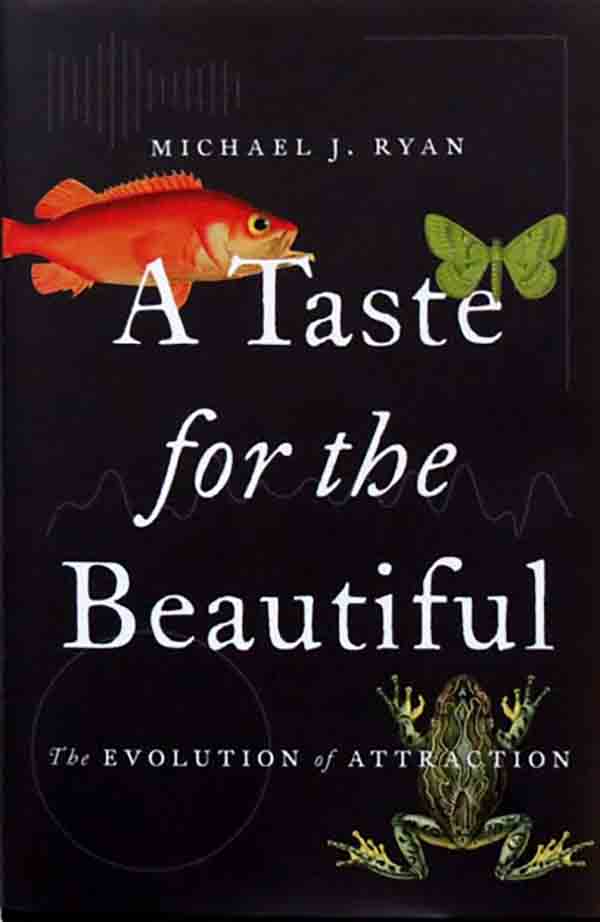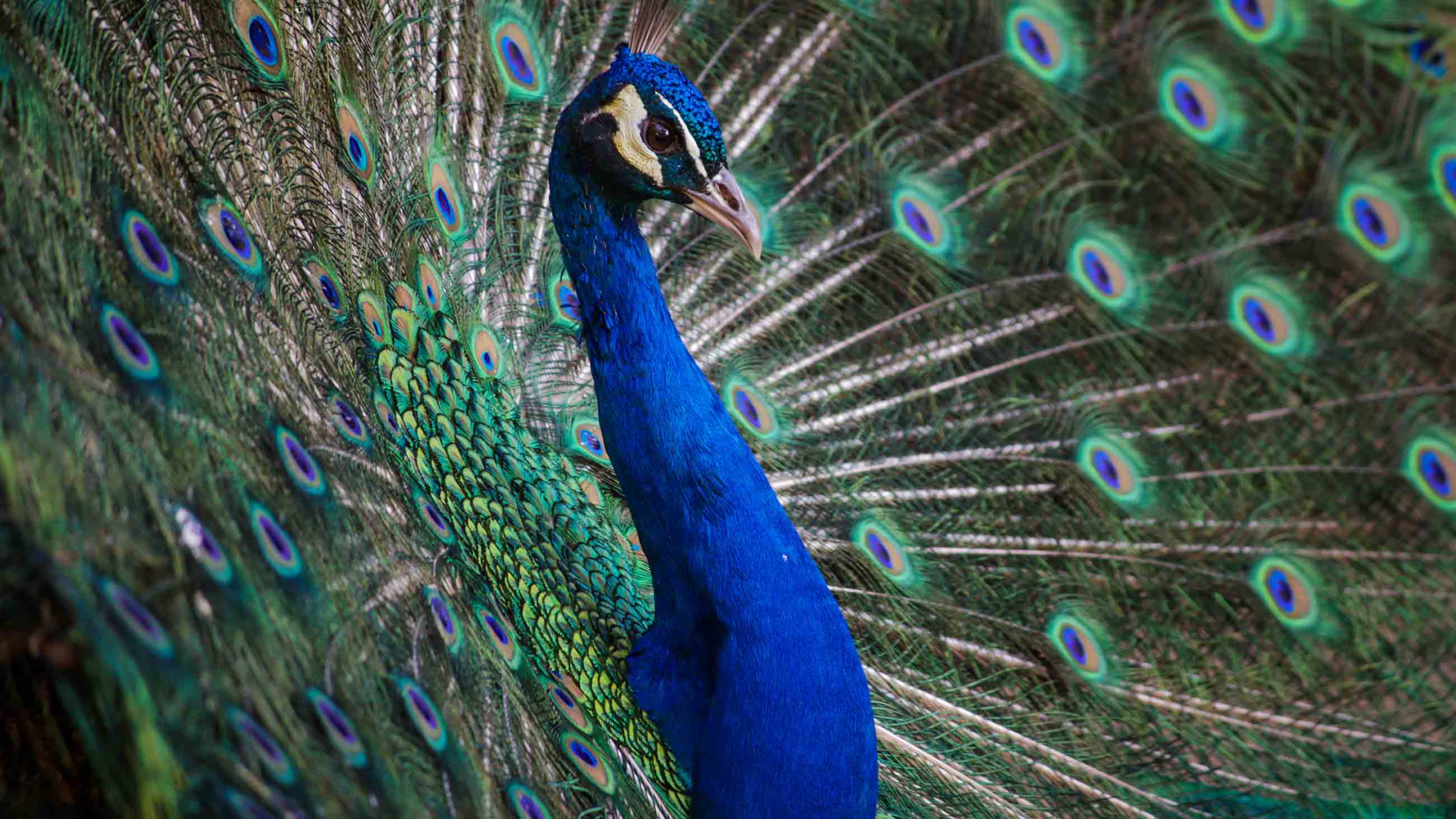If you think of beauty as something absolute — if you think Beyoncé or George Clooney is just beautiful, simple as that — Michael J. Ryan is here to tell you you’re wrong. Beauty, he asserts in this lovely and learned new book, exists only as a value-laden, capricious, and sometimes fleeting perception generated by the brain.

BOOK REVIEW — “A Taste for the Beautiful: The Evolution of Attraction,” by Michael J. Ryan (Princeton University Press, 200 pages).
Beauty is literally in the eye of the beholder: It reveals itself only where and when the beholder thinks it does. In effect, then, to perceive beauty is to create it. And virtually all sexual species have evolved both the neural systems to perceive beauty and the traits that are or become so perceived.
If you’re thinking this sounds circular and suspiciously chicken-and-egg, I’m here to tell you you’re right. Sexual selection is a complex, counterintuitive, three-pronged theory that seeks to explain both everyday sexual attraction and some of nature’s most bizarre forms, phenomena, and behavior. Even Darwin, who conceived the theory a century and a half ago, couldn’t quite wrap his mind around it, and the mature version that Ryan explores here is much and savagely disputed.
The difficulty of explaining how sexual selection creates beauty is only Ryan’s first challenge. His second is that at least two notable books have already explained it memorably. The first, of course, was “The Descent of Man, and Selection in Relation to Sex” (Darwin’s “second most famous book,” notes Ryan), which explained it memorably but incompletely.
The second book, and what might seem Ryan’s more direct challenge, is the Yale University ornithologist Richard O. Prum’s “The Evolution of Beauty,” which was published last year to so much praise that Ryan, who must have been sending his own book off to press amid all that noise, must have blanched. Can Ryan’s book compete with a work so acclaimed? Would even his most likely readers — which is to say, Prum’s audience — find it alluring?
Happily, most readers, including those who’ve already read Prum (as I have), should find Ryan’s book brilliant enough, and different enough in what it covers and how it deploys wide learning and sly writing, to stand on its own. The two books seldom overlap in their examples, complement each other wonderfully, entertain us thoroughly, and together make clear the power of a theory they convincingly describe as equal in power and importance as Darwin’s theory of natural selection. I recommend you read both.
Uniting Prum, Ryan, and many other evolutionary biologists is their conviction that sexual beauty can evolve in any of three ways. A brain may slowly change to appreciate a trait that may or may not have to do with fitness. A trait may evolve purely to appeal to a pre-existing neural bias — to become beautiful, in other words. Or a trait may co-evolve along with a brain-based bias. In this co-evolution of beauty, the appreciation and the trait — a slight preference for a slightly red beak, for instance — are each increasingly selected and are thus spread and amplified by the other. They grow much like a fad or the run-up of a stock that’s hot because it’s hot — only they do so over eons.
In the first third of his book, Ryan uses his decades of meticulous study of frog sex to focus on what we might call the brain-first model — in which the brain’s attentional bias is exploited by a trait that evolves to appeal to it and to be spread by sexual selection.
Such bias, he shows us, often exists not because it was selected for, but as mere happenstance. In Ryan’s main study species, for instance, the túngara frog, the ears have two chambers tuned respectively to the frequencies of the whine and chuck sounds that males use in their whine-chuck-chuck (low-high-high) mating call. Did the túngara’s two-part ear evolve to hear this two-frequency whine-chuck call, or did the call evolve to appeal to the ear?
To answer this, Ryan studied the ear structures of eight close cousin species of the túngara living in nearby Central and South American forests. All eight had two-chamber ear structures tuned similarly to the túngara’s— a strong sign they’d descended from a common ancestor. Yet while the mating calls of all eight species included a whine matched to the lower-pitched ear chamber, none included a chuck or any other sound to appeal to the higher-pitched chamber. The túngaras’ higher-pitched chamber, Ryan concluded, had existed before they developed the chuck to appeal to it.
By contrast, Prum focuses more on the co-evolutionary dynamic seen in the showy songbirds he studies. Whether by design or chance, the two books thus work like a tag team to convey a much deeper and more memorable view of sexual selection than either could provide alone. And together they give new strength to Darwin’s assertion that sexual selection is powerful enough to stand apart from natural selection as a prime force of evolution.
This argument is not welcomed by many evolutionary scientists, including some of the most dominant, who see sexual selection not as an independent selective force but as a sort of slippery adjunct to “real” natural selection. Ever since Darwin, this fitness-centric view generally casts beauty as an “honest sign of fitness”— an indicator of excess resources and the ability to exploit, survive, and perhaps dominate an environment even while flashing a fancy tail. The implication is that survival is somehow more vital than sex. Because you can’t very well have sex, can you, if you don’t survive to have it?
True enough. Yet Ryan and Plum see survival as secondary: We don’t have sex to survive; we survive to have sex. Survival just makes you available to perform the act that passes your genes.
This may seem a distinction without a difference. Yet it’s important for many reasons, among them whether evolutionary science has a bias toward seeing the decisions, actions, and biological capacities of one sex or the other as more evolutionarily vital. As Prum notes in his book, for instance, one of the first objections Darwin’s peers made to his theory of sexual selection was that it ceded too much evolutionary power to “the instability of vicious feminine caprice” (now known as female choice and autonomy). Prum is one of many who believe that a similar chauvinistic sentiment still infects this debate. In this dispute so enduring and so red in tooth, claw, and vicious trash talk, Ryan’s explication of the brain-first model provides an invaluable weapon: a clearly depicted form of sexual selection that often favors arbitrary beauty over fitness.
Having seeded the ground with frogs, Ryan spends the book’s second half reeling off tale after delightful tale demonstrating the enchanting, astonishing, and occasionally disturbing ways in which beauty evolves.
He groups them into three chapters about senses (“Visions of Beauty,” “The Sounds of Sex,” “The Aroma of Adulation”) and two lively chapters concerning mainly humans: “Fickle Preferences,” which explores mutable tastes of both women and men, starting with bar cowboys (who knew there was an entire literature on sexual selection in country western songs?), and “Hidden Preferences and Life in Pornotopia,” which delivers what it says on the tin.
For more than the titles of those chapters, you must read the book, for I can’t find a way to summarize how sexual signaling works in three senses, how the country western song “Don’t the Girls All Get Prettier at Closin’ Time” describes a fickleness common to both sexes in many species, and how an experiment left quails with a sex fetish.
Do read the book. You will see in nature a beauty you had previously failed to appreciate. You will evolve.
David Dobbs writes on science and culture for The New York Times, The Atlantic, National Geographic, and other publications, and is author of the best-selling short memoir “My Mother’s Lover.”
CORRECTION: An earlier version of this review included an incorrect reference to the two-chamber ear structures of frogs studied by the author of “A Taste for the Beautiful.” Túngara frogs, he determined, developed a chuck sound to appeal to the higher-pitched chamber of potential mates, not the lower-pitched chamber.











Comments are automatically closed one year after article publication. Archived comments are below.
What about another (rather Kantian) theory:
Perception of beauty (aesthetics) underlies all cognition, and first enables us to see order, harmony, systematicity in the world?